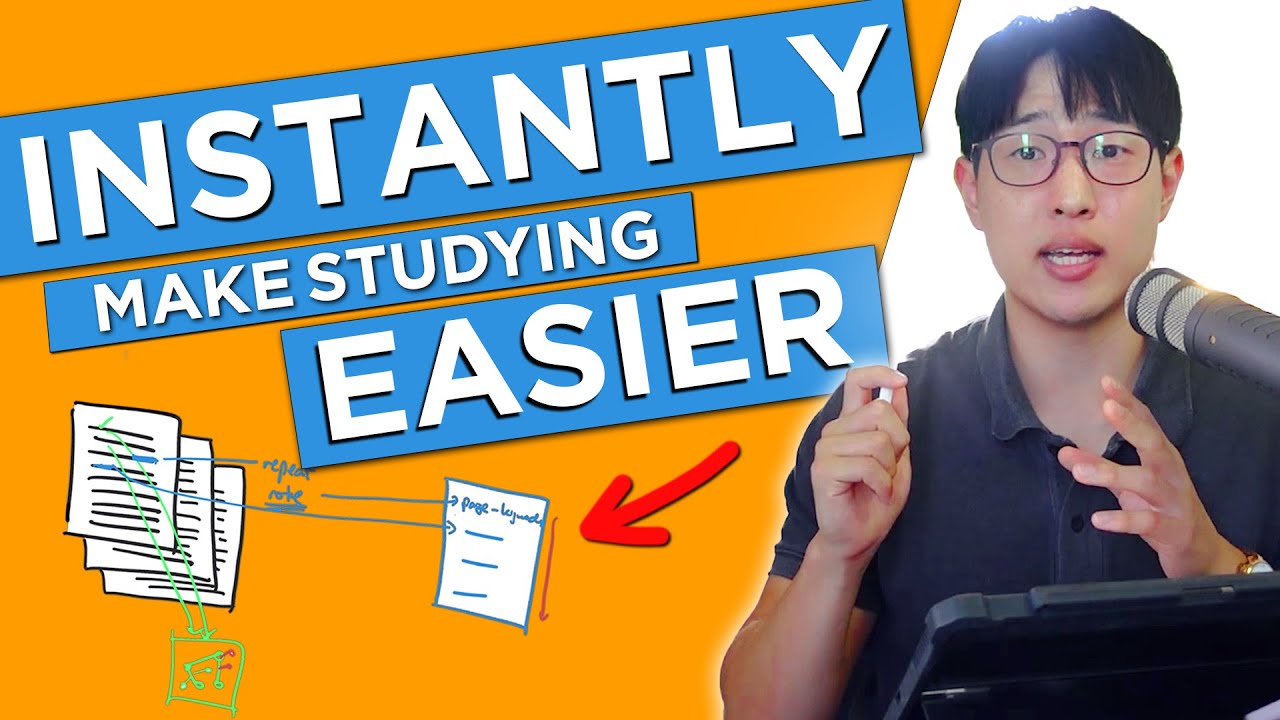how to remember EVERYTHING you read, in two steps.
Summary
TLDRThis video reveals a two-step system to help with effective memorization and understanding of complex subjects, based on the creator's personal experience. The first step is 'blurt and understand,' where you actively recall and rephrase the material in your own words, helping you understand it in depth. The second step involves spaced repetition, regularly testing yourself over time to reinforce long-term memory retention. By combining these techniques, viewers can improve their ability to remember information without needing to re-read it constantly. The video also emphasizes perseverance in learning and recommends tools like Anki for spaced repetition.
Takeaways
- 😀 Understand that linking information to a broader context makes memorization easier and more effective.
- 😀 Don't just memorize facts; strive to understand the context and depth of the information you're learning.
- 😀 Avoid passive reading as it doesn't engage your brain effectively. Active studying requires more mental effort and attention.
- 😀 Active recall is key—when you read a passage, try to recite it in your own words to reinforce understanding.
- 😀 The Feynman Technique, which involves explaining information in your own words, helps deepen comprehension.
- 😀 The two-step system for better retention involves 'blurt and understand' followed by 'testing' to ensure long-term memory.
- 😀 Blurt and understand means reading, then recalling and explaining the information without looking at the source.
- 😀 Testing yourself regularly, especially using spaced repetition, helps prevent forgetting and boosts memory retention over time.
- 😀 Spaced repetition involves revisiting information at increasing intervals, improving memory without constant review.
- 😀 Tools like Anki or Notion can help you track and space your repetitions to maximize the effectiveness of your study sessions.
- 😀 Some people may need more time or effort to memorize information, but perseverance often leads to greater success than natural ability.
Q & A
What is the two-step system mentioned for effective memorization?
-The two-step system involves 'blurt and understand' followed by 'test.' In the first step, you read a passage, then look away and try to explain it in your own words, ensuring you grasp the full context. In the second step, you repeatedly test yourself using spaced repetition to solidify the memory.
Why is understanding the context of a fact important before memorizing it?
-Understanding the context of a fact ensures deeper retention. By seeing how a fact fits into a bigger picture, you are more likely to remember it in the long run, rather than just memorizing the fact itself without understanding.
What is the problem with passive reading, and why should it be avoided?
-Passive reading is ineffective because it doesn't engage your brain actively. It may seem intuitive, but it doesn't challenge you to truly understand or remember the material. Active learning, which involves retrieval and understanding, is much more effective.
How does the 'blurt and understand' technique work?
-The 'blurt and understand' technique involves reading a passage, then looking away and trying to explain the information in your own words. This forces you to retrieve the information from memory, enhancing your understanding and reinforcing the material.
What is the role of spaced repetition in the memorization process?
-Spaced repetition involves testing yourself at increasing intervals, which strengthens your memory retention over time. This method ensures you don’t forget the material quickly and helps transfer it to long-term memory.
Why is it important to test yourself on the material over time?
-Repeated testing helps reinforce the material in your memory. Since our brains naturally forget things, testing ensures that the information remains fresh and solidifies the connection, improving long-term retention.
What tool does the speaker recommend for spaced repetition?
-The speaker recommends using the Anki flashcard app, which uses spaced repetition to help manage and track revision, ensuring more effective retention of information over time.
How does the Finman’s technique fit into the two-step system?
-Finman’s technique is part of the 'blurt and understand' step. It involves explaining the information in your own words, which forces you to deeply understand the material and not just memorize it.
Why do some people struggle with memorizing despite following these techniques?
-Some people may struggle with memorization due to individual differences in learning styles or memory capacity. However, perseverance and consistent effort are key factors in overcoming these challenges and achieving success in learning.
How can tools like Notion or flashcard apps help with studying?
-Tools like Notion or flashcard apps help track study progress and identify which material needs to be revisited. These tools can aid in organizing content for spaced repetition and ensure regular testing for better retention.
Outlines

This section is available to paid users only. Please upgrade to access this part.
Upgrade NowMindmap

This section is available to paid users only. Please upgrade to access this part.
Upgrade NowKeywords

This section is available to paid users only. Please upgrade to access this part.
Upgrade NowHighlights

This section is available to paid users only. Please upgrade to access this part.
Upgrade NowTranscripts

This section is available to paid users only. Please upgrade to access this part.
Upgrade NowBrowse More Related Video

My Most POWERFUL Study Trick (Any Subject)

this simple formula has made me millions (6 steps)

COMO montar um CRONOGRAMA/ROTINA de ESTUDOS para o ENEM

Train Yourself to Efficiently Study 10+ Subjects in School

How to Learn Anything Easily and Fast! | By Dhruv Rathee

Obsidian vs Kortex: What's the difference?
5.0 / 5 (0 votes)